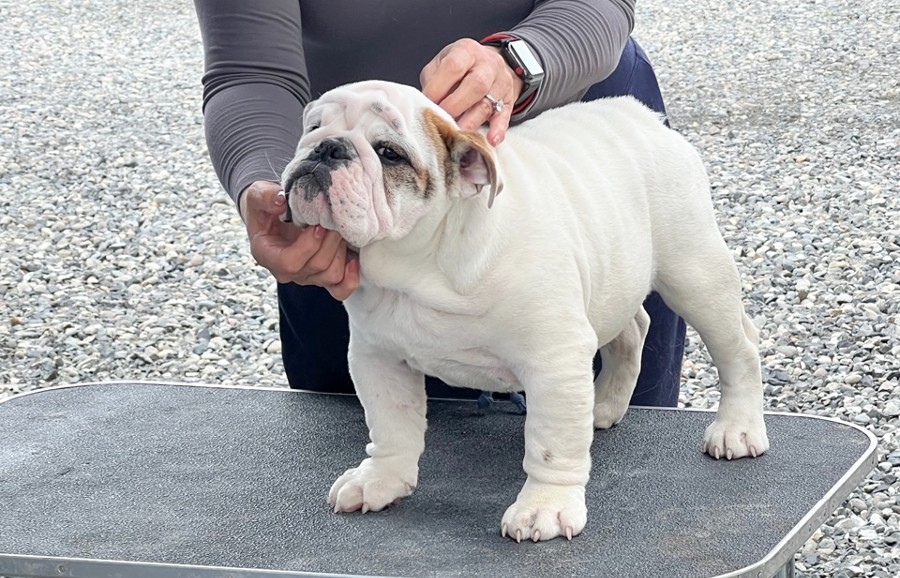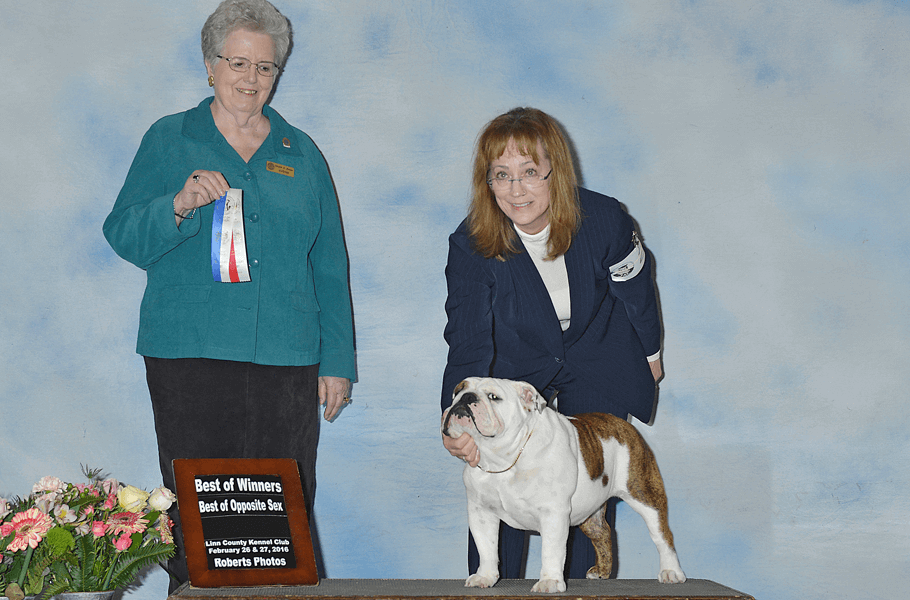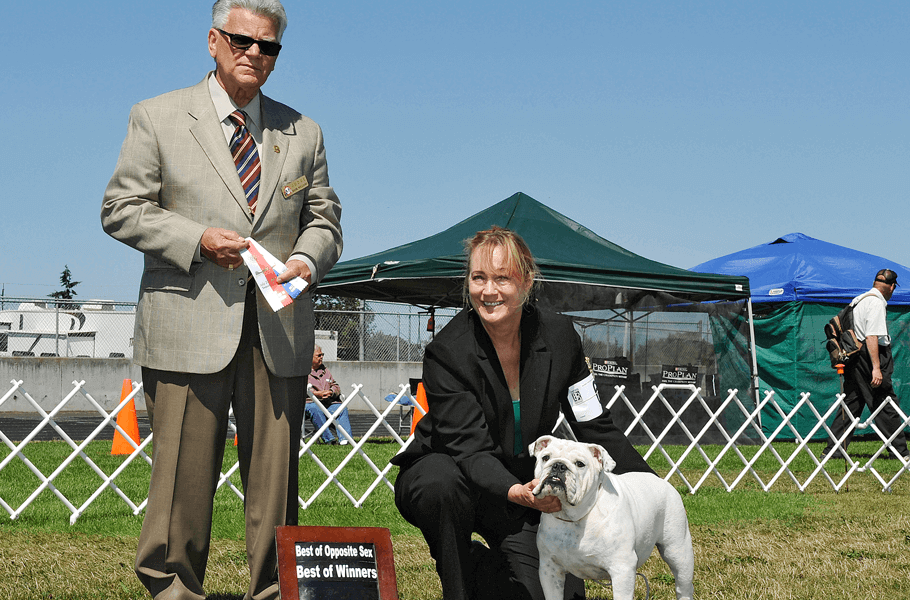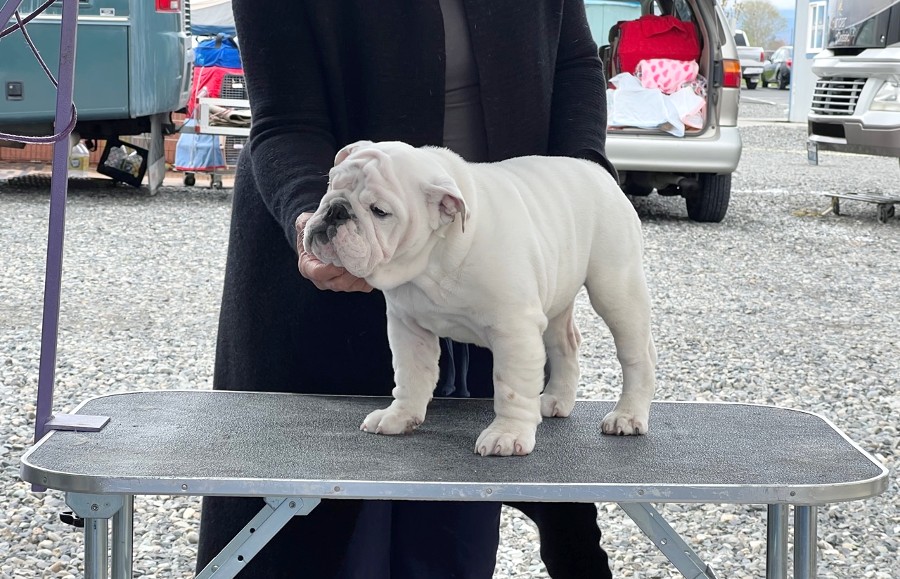What Makes a Good Show Dog?
What Makes a Good Show Dog?

What makes a good show dog? This is a question we sometimes hear from those interested in entering their dogs into dog shows. It was certainly a question we wondered ourselves when we first began showing. To be a successful show dog, a dog must, of course, meet the breed standard. But there’s more to it than that.
A good show dog must also have a calm and capable handler and possess an inner charm and confidence; a certain je ne sais quoi. We’ll detail exactly what we mean by that and more in this guide what to makes a good show dog.
1. They Fit the Breed Standard
In order to enter a conformation show, your dog must conform to what’s called a breed “standard”—a list of ideal physical traits specific to each breed. Every breed has its own standard, which the American Kennel Club (AKC) publishes and oversees. Dog show judges refer to the breed standard when assessing dogs competing in a dog show. They look at the dozens of required characteristics and then evaluate the dogs to see how well they measure up.
Some of the physical characteristics they consider include:
- Eye color, shape, size, set, and depth
- Skull circumference
- Ear size, shape, and set
- Face and muzzle size
- Coat texture and color
The judges also consider temperament, demeanor and disposition. A bulldog’s disposition, according to the Bulldog Standard, for example, must be “equable and kind, resolute and courageous (not vicious or aggressive).”
2. They Have Charisma
While conforming to the breed standard is vital for competing in a dog show, matching the breed standard alone isn’t enough. This is because the top dogs that compete in prestigious shows are often near-perfect replicas of their breed standards. What’s more, they’re impeccably trained.
At that point, how do the judges pick a winner?
This is where a dog’s personality and temperament can come into play. A good show dog looks like they clearly want to be in the ring. They move freely and confidently. They must also work well with their handler and demonstrate character, showmanship, and charisma.
3. Handlers Matter, Too
Sometimes the outcome of a dog show is determined not by the dog, but by the person handling him.
If you talk to show dog handlers, you’ll often hear them say something to the effect of “it travels down the lead.” A show dog is trained to be in-tune with his or her handler in order to react quickly to every command.
This can be helpful when a handler’s in a great mood, as his or her calm demeanor will be infectious, “traveling down the lead” and positively influencing the dog’s performance in the ring.
But it can have the opposite effect as well.
Dogs have superior hearing and smell and will often sense when a handler is nervous, tense, or upset. They’ll detect any changes to the handler’s tone of voice and will literally smell their fear. This can make a normally serene show dog jittery or on edge.
If you plan on being the handler for your dog in the ring, do what you can beforehand to calm your nerves. Take some deep breaths or listen to some calming music. Handlers have also been known to chew mint gum to mask the scent of fear.
Show Quality vs Pet Quality Dogs: What’s the Difference?
Breeders use the terms “show quality dog” or “pet quality puppy” when discussing litters, which can be confusing if you’re unfamiliar with the terminology.
A show quality dog is a dog that the breeder believes will place well in dog shows—meaning, their physical appearance and temperament appear to match the breed standard. These dogs usually cost more and some breeders will only let show quality dogs go to “show homes” (i.e., homes where the owners are committed to having their dogs compete in dog shows).
Read: How to Pick a Show Quality Bulldog Puppy.
A pet quality dog is a dog that has a quality (or qualities) that will likely disqualify him or her from competing in confirmation shows. This is often something minor that most dog owners would never notice, like the wrong eye or nostril color (yes, really) or a slight wave in the tail.
But just because a dog has been labeled “pet quality”, doesn’t mean that he isn’t every bit as beautiful and wonderfully tempered as a show quality dog. It only means he doesn’t perfectly match the standard.
Discerning between a show quality vs pet quality dog isn’t an exact science. Sometimes a perfect-looking pup will grow up to be too big to compete, or a gangly looking six-week-old will develop into a graceful show champion. This is why breeders will often wait six-to-eight weeks so that they see how a dog will turn out before they prepare them to go to their forever homes.
The Importance of Finding a Quality Breeder
Although ensuring your dog meets breed standard, has a great temperament, and an experienced handler is a great place to start, what makes a good show dog can often be subjective.
When it comes to each breed’s standard, there’s some wiggle room there, which allows show judges to, well, use their best judgment when determining which dog qualifies for a ribbon.
This is why it’s important to work with a quality breeder when selecting your next show dog. An experienced breeder who has a history of breeding and showing champion bulldogs will intuitively know which characteristics to prioritize and which to overlook.
Cascade Bulldogs is a bulldog blog managed by Gail and Eddie Harris. Gail and Eddie breed and show bulldogs around the United States from their home in the beautiful Cascade Mountains of Washington state. Follow Cascade Bulldogs on Facebook and Instagram for more tips on raising and showing bulldogs.










